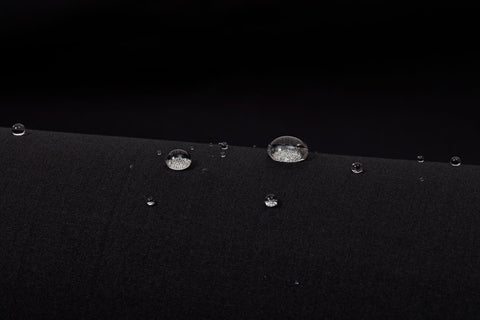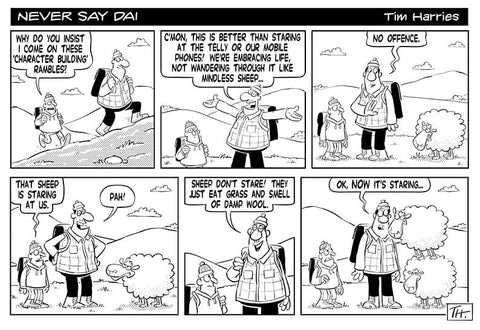“What we see depends mainly on what we look for.” — John Lubbock.
As I sit to write this, it is a drizzly day. Beautiful weather for this time of year! Fresh medics are coming up already which will set us up wonderfully for joining next week and for the winter. I hope you are also under this rain band!
We are continuing our series on classing sheep. First, we needed to train ourselves to look at the overall shape and structure of the sheep and get your hands on her back to feel her condition. Next, we were to get our hands in the wool to feel the softness.
Today we finally get to look at the wool!
The main criteria we assess are the colour, staple length, bundling and crimp. We want lustrous, bright white wool. We want long staple length. We want pencil thin bundles. We want bold, horseshoe crimp. Basically, we want just about everything that many of the traditional breeders out there have spent their whole lives breeding away from (apart from white wool)!
But that traditional thinking is a big part of why merinos have the reputation of having just one purpose in life: to die. It’s why the next generation of farmers are swapping their sheep for tractors and spray rigs, or for cattle and wannabe cattle (shedding sheep).
The traditional way
Let’s stop thinking that wool should look like this:

Fine crimping wool.
Now, I can appreciate that it is a pretty piece of wool. Perhaps if you are trying to get into the Italian market, that’s the wool you want – stiff, shorter stapled wool for suiting. But personally, I want to produce soft wool that feels amazing to wear next to skin. Wool that can produce lighter weight and stronger yarn. Wool that has elasticity and drapes beautifully.
I can also nearly guarantee that I don’t want to own the sheep that grew the wool in that photo above. I strongly suspect that its host has plenty of wrinkle that is hard to shear and provides a lovely home for flies. It probably turns all colours of the rainbow in an unfavourable season and needs high quality forage to survive, let along produce 130+% lambs.
I know that fine crimping wool was used to guess at finer micron. But as we saw from the graph in last month’s article, that was a complete fool’s errand. It boggles my mind as to why it is still taught and so fervently defended in many circles.
If we want the merino industry to thrive into the future, we need to breed for bold, horseshoe crimp in tandem with the softness we spoke of last month.

Well defined, deep bold crimping wool.
What does bold crimp give you
There are some research papers that indicate that better wool character is correlated with higher yielding wool, lower fibre diameter and lower coefficients of variation. In other words, selecting for wool character helps keep the wool cleaner, is associated with finer wool and results in a more consistent fibre diameter.
Now, “wool character” is related to but not the same as the crimp we are talking about. They defined it on a scale from “well defined, highly visible crimp” to “poor crimp with little definition.”
However, those correlations match what we see in our own sheep when we score our lambs for crimp just before their first shearing.
In last month’s article, I mentioned that many of the wool characteristics we look at are not important for their own sake. Unfortunately, we do not get paid more for better, bold crimping wool. We would only select for it because it is correlated with or indicates traits that we DO get paid for.
The most effective way to select for higher yields, lower micron, and lower CV wool is to measure and select on those things directly.
Most commercial growers I know do not want that amount of extra labour and cost, which is why I suggest you use crimp as part of your visual classing criteria.
The end product – clothes!
There are also some intangible benefits if we really care about the end product that we are producing.
One of the traits that makes wool such a glorious fibre is its drape and elasticity. If a garment is made from deep, horseshoe crimped wool, it will have elasticity that no other fibre has. This is because the crimpy wool tries to return to its original form, allowing the cloth to have that give, or stretch.
It is also how they have made waterproof jackets from pure wool. In a process called Optim™, the fibres are stretched very tightly while they are being woven. Once complete, the stretch is released and the fibres spring back together so tightly that it is now a waterproof cloth! So interesting and incredible!

Waterproof woollen cloth using Optim™
Indicator of underlying wool development.
Another reason that a deep bold crimp is desirable, is that it indicates the sheep has the right underlying skin biology.
Remember we want to breed sheep that have exceptional wool quality while needing minimal to no input from us to keep them thriving, except for the forage we grow in the paddock.
For this to happen we want the sheep to be growing wool easily so it can also divert energy to producing lambs, meat, and fat reserves. As such, we want the wool follicles to be well aligned, spaced and organised on a simple skin so that it can grow a large amount of high-quality wool.
This simple skin and aligned fibres also allow wool to repel water and dry quicker to reduce the risk of flystrike without mulesing.
Crimp that is deep, bold, and well aligned suggests that the sheep has those correct follicles and skin biology. I know that the fine crimping wool looks pretty, but it is not helping you breed sheep that work for you!
Until next time!
The Rissmerino team.


